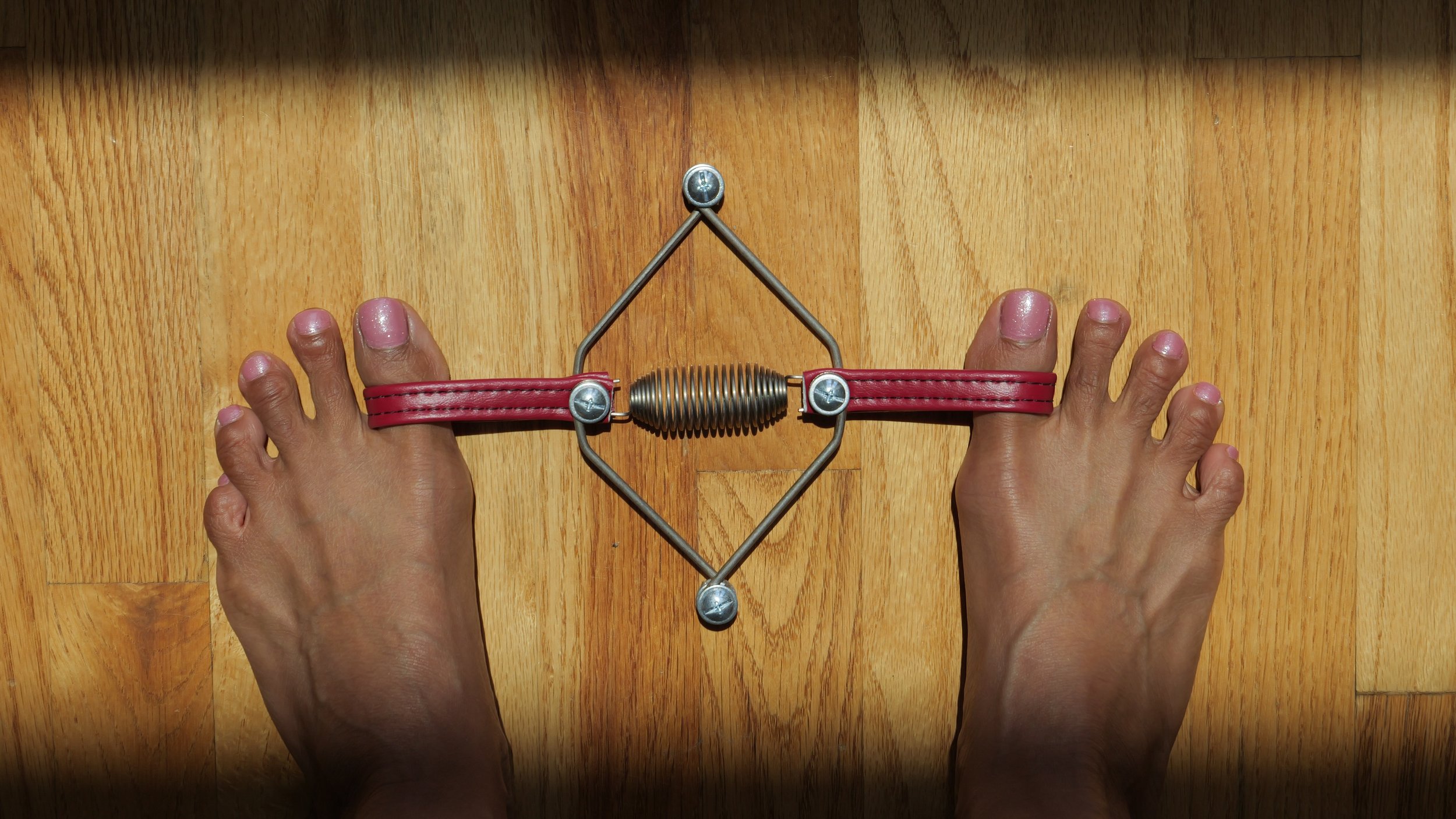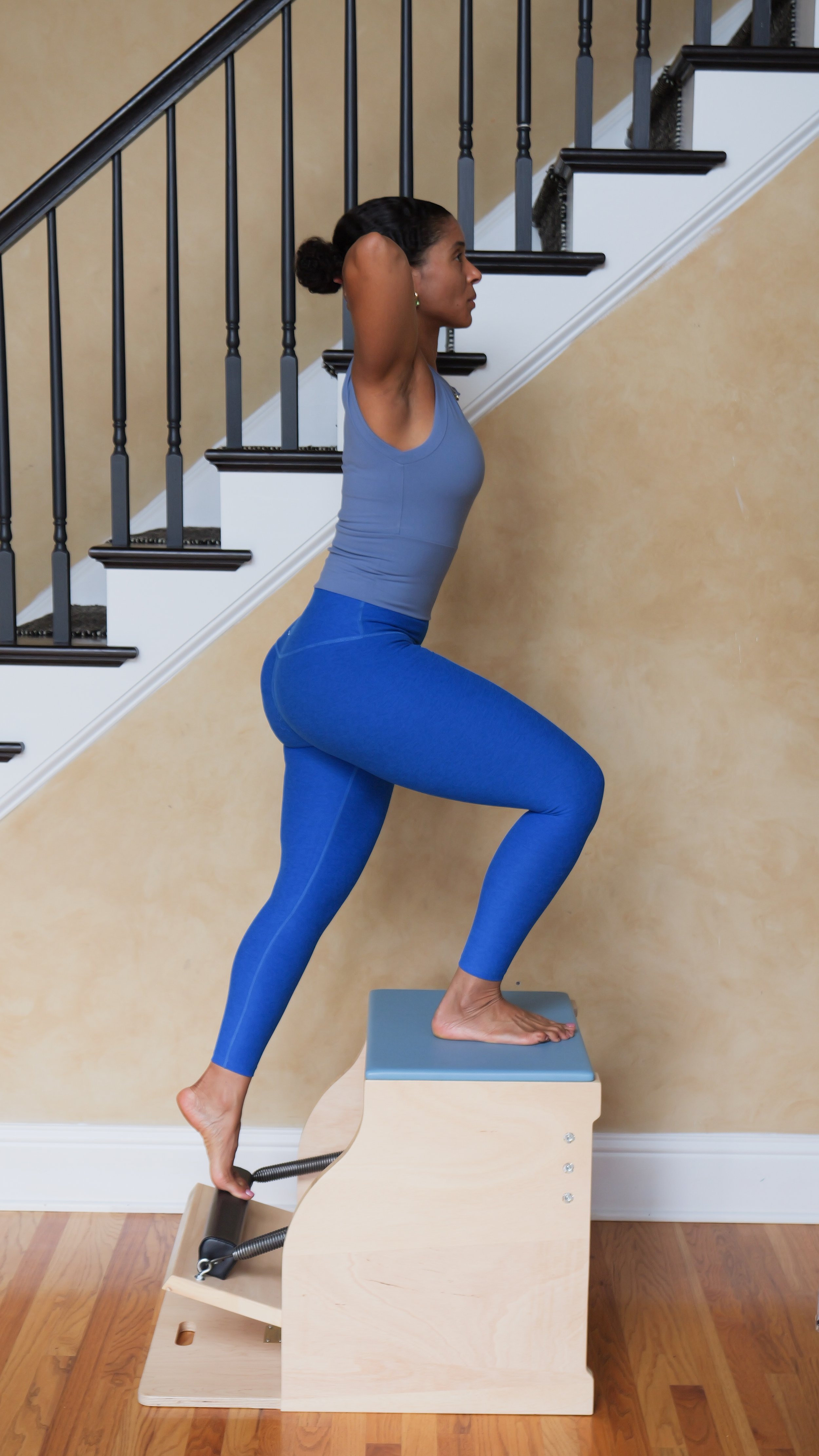Healing knee pain with Classical Pilates
After a particularly intense hike in February, I returned home with a stiff feeling around my left knee that progressively got worse over the next few days. Simple things like walking and going up stairs became nearly impossible.
I could feel a bulge behind my left knee and immediately resorted to Dr. Google for a diagnosis of what might be going on. My search revealed that I had probably torn my meniscus or a ligament that was now floating around and causing the bulge in the back of my knee. My first instinct upon reading this diagnosis was to panic. I could not afford to go into surgery right now. I had too many commitments and plans for the next few months to be derailed by knee surgery.
Also how was it even possible that I had gotten injured during a hike? As a Pilates Teacher wasn’t Pilates meant to have made my joints and body resistant to injury?
The truth is my personal practice had been suffering for the past few months. What was once a consistent daily practice that made me feel really strong had turned into a two to three times a week practice on good weeks. My workouts when they happened were always rushed and I would work through the classical sequences without much focus on my individual needs, like I used to before. Between training clients, trying to grow my business, attending trainings and taking care of my family, I was spending too much time sitting in front of my computer and in my car. My personal practice was really suffering and my body had lost a lot of its strength.
Once my mind calmed down I decided to take a more logical approach. While I had a bulge behind my knee, the joint itself did not feel particularly unstable. I was a Pilates Teacher after all and made a living helping people overcome joint pain, injury and weakness. How could I apply what I advised my clients to do, to myself.
The first step was to get an examination and X-ray done at the Orthopedist to determine what was really going on instead of relying solely on my Google diagnosis. This step is important. As Pilates practitioners and teachers we may know a lot about the body but we typically do not have x-ray vision or can see under the skin. When it comes to injuries it's best to collaborate with other professionals who can give us a more accurate diagnosis and make sure the exercise and strategy we are choosing for recovery will actually help to fix the problem and not make it worse.
It turned out what I was experiencing was hamstring tendinitis and not ligament or a meniscus tear. All those months of sitting in front of my computer were finally taking their toll in the form of weak quads, hamstrings and glutes all of which are needed for strong, healthy, functional, knees. An additional visit to the chiropractor also revealed that my hips were completely out of alignment. The recommendation was to strengthen the muscles that support my knee joint and stretch the areas that were tight. At least I would be able to fix the problem without needing surgery which was a big relief.
Luckily the Pilates system provides all the tools necessary to do exactly what was recommended. Strengthen and stretch the body in a way that brings back balance and functionality. It becomes possible to target muscles that remain dormant in other exercise formats and strengthen them to the point where they are functional again and support the body in its daily movements.
In Pilates, the feet also play a big part throughout the whole system. Dysfunction and weakness in the feet will often travel up the rest of the leg and manifest itself in places like the hip and joint. We find that on all the apparatus it’s possible to incorporate some kind of footwork to strengthen the body from the ground or feet up.
With this in mind, I started with my feet and revisited the foot corrector and toe gizmo. Both are excellent tools for strengthening the muscles of the feet and ankles. To provide a solid foundation that supports the legs and torso. Apart from strengthening the feet using these foot-specific devices, it helps feel and build the connection between the feet and other parts of the body like your core and glutes. Using the toe gizmo to work the external rotation of my legs helped me realise just how weak my left glute was. Weak glutes are often a major cause of back, hip and knee pain. When you gain information about precisely what is not working it gives you the opportunity to really focus on strengthening that specific area of weakness.
Another favourite that I incorporated into my recovery journey pretty early on, is the Cadillac Breathing exercise. It’s one of the best exercises for building the strength you need for healthy knees. Cadillac breathing strengthens weaknesses in the posterior chain while helping you find pelvic stability and creating length throughout the body. This exercise is especially useful when the client is not able or ready to push against the tension of the springs in Pilates. In the first few days of my injury when I could barely bend or move my knee this exercise brought immediate relief. It started the process of strengthening my hamstrings and glutes while simultaneously creating space in my tight hips.
The Wunda Chair is another great tool to incorporate when rehabilitating a knee injury. Especially in clients who have lost connection to their glutes and need to strengthen their quads and hamstrings like I did. I started with light springs and basic exercises like seated footwork and standing pumping, often incorporating balls (like the Franklin balls) to help me maintain correct alignment in the work. Exercises like the single leg tendon stretch also helped greatly to bring back stability and connection throughout my injured leg.
Once I had gained some strength and it felt safe to do so, I incorporated going up front and mountain climbers on the wunda chair, really focusing on correct alignment in my feet and legs. Making sure my arches were not collapsing and my knees not leaning excessively inwards or outwards.
For releasing tightness in my hips and hamstrings, the Ladder barrel was my favourite tool. I made sure to work through the ballet /ladder barrel leg stretches daily. Exercise sequences like the tree on the barrel were fantastic for helping me open my tight hip flexors and quads while strengthening my core. I love that even in the stretch sequences in Pilates you are always simultaneously working from an angle of strength. This means you are never passively stretching tight muscles but always lengthening them in a way that is functional to everyday activities off the Pilates apparatus.
Eventually I had gained enough strength and my knee felt good enough to get back into exercises like Leg Springs and Parakeet on the Cadillac. I also started incorporating the reformer again, keeping in mind I was using a classical reformer where the springs are evenly weighted. First on one to two springs before eventually building back up to three and four springs depending on the exercise over a period of about three months. In combination with outdoor walks and cycling on my spin bike, my knee actually feels better now than it did before.
Getting injured offers so many opportunities for learning. Once you are injured and a body part no longer functions you truly start to appreciate your body's ability to function as a whole. I learned so much about my body and what it needs in the process of rehabilitating this knee injury with Pilates. I also have so much more confidence when dealing with clients that have knee injuries. Going through this process was a great reminder of how much Pilates offers beyond a workout that will snatch your waist. This system is truly healing to the body when the work is tailored to the individual body and what it needs.
——————————————
Alexa is a classical Pilates teacher who aims to share her love for Pilates with as many people as possible, especially those who have traditionally been under-represented in this practice. Through classical Pilates she helps women reach new limits and discover the best version of themselves. Check out Alexa's in-person and virtual Pilates offerings at lowimpactfit.com
Alexa is running a retreat in Portugal in October 2023. To find out more see below.
Dates: October 2-7
Location: Faro Portugal
Full details can be found here.





